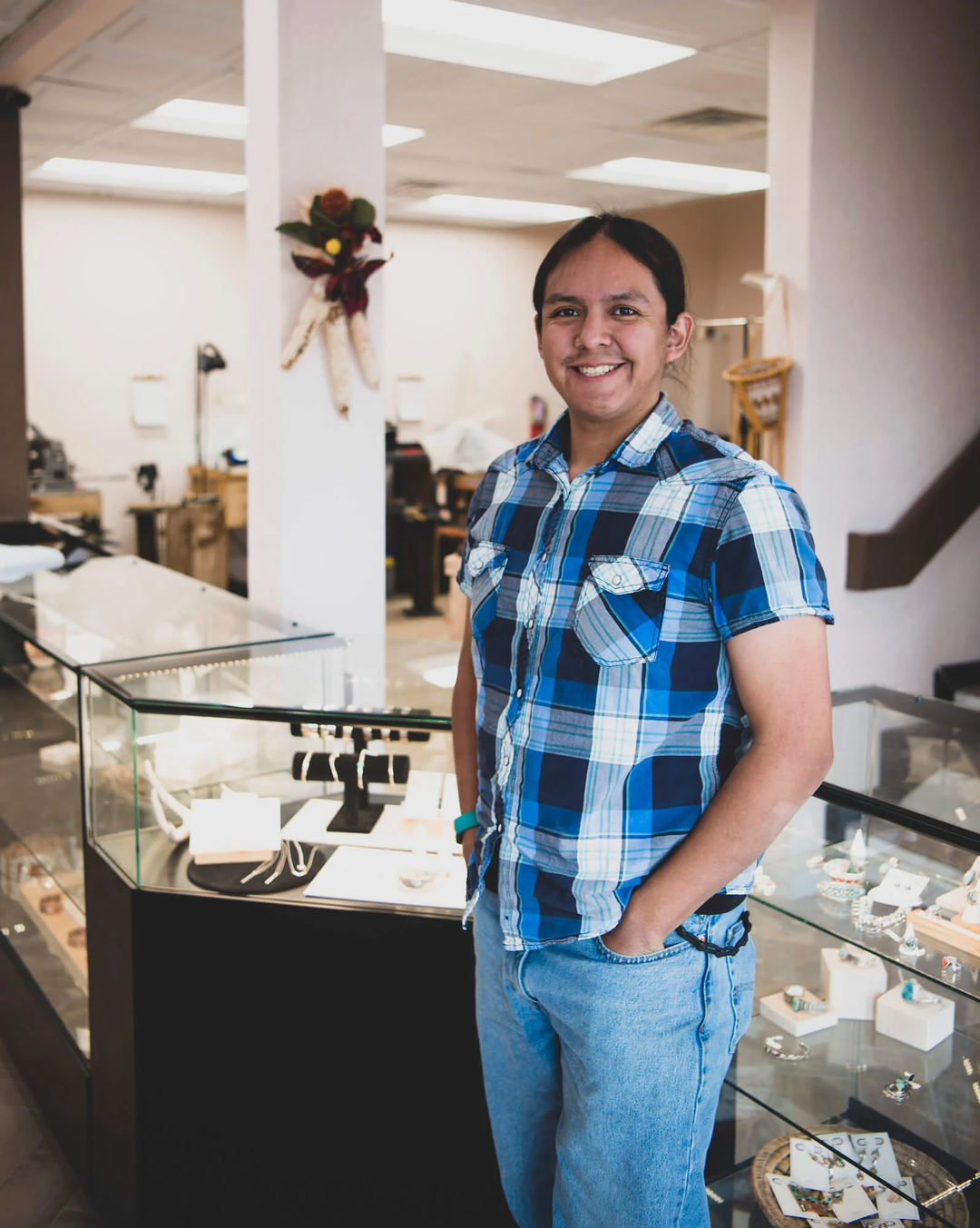Southwestern Cultural Symbols
Native New Mexican, Indigenous, Spanish and Chicanx cultures blend in a story-rich desert landscape.
The Zia
Four is a sacred number to many Indigenous people. The design of the Zia symbol represents the four stages of life, seasons and directions, as well as depicting the sun, which gives us life. The Zia symbol appears on the state flag of New Mexico, but originally comes from the Keres people of Zia Pueblo. We received permission to use this iconic symbol from Peter Pino, former Governor of the Pueblo of Zia, who fought fiercely to raise awareness about the misuse of their sacred symbol.


Navajo Weaving Pattern
According to Diné (Navajo) creation stories, Spider Mother wove the fabric of life on crosspoles using lightning and earth. The zigzag pattern she created represented waves of water and light, which sustain life.
Squash Blossom
It is believed that the Naja symbol at the center of a squash blossom necklace originated with the Moors in the Middle East, traveling to Southern Spain, and eventually landing in the New World on Spanish bridles, where the Diné people adopted it into jewelry. The bell shaped blossoms of the necklace represent the flowers of the squash plant.

Non-Profit Co-Op
The T.Skies Nonprofit Co-op began as a place for Indigenous artisans to make their jewelry with shared crafting tools and access to distribution through the T.Skies Jewelry shop. The purpose was to make jewelry craft possible again for the artists who had been out-priced by inauthentic foreign imports.
Now, a portion of the profit from our signature jewelry goes to the nonprofit co-op. Your purchase helps to steward Southwestern culture and provide fair work for talented locals.
“The co-op allows us to interact with other artists, gaining tips, advice, and techniques. The co-op is not just a workspace but a friendly space. Working with another, improves another. ”
- Devin, President of the Nonprofit Co-op
Diné “Navajo” Silversmith
















